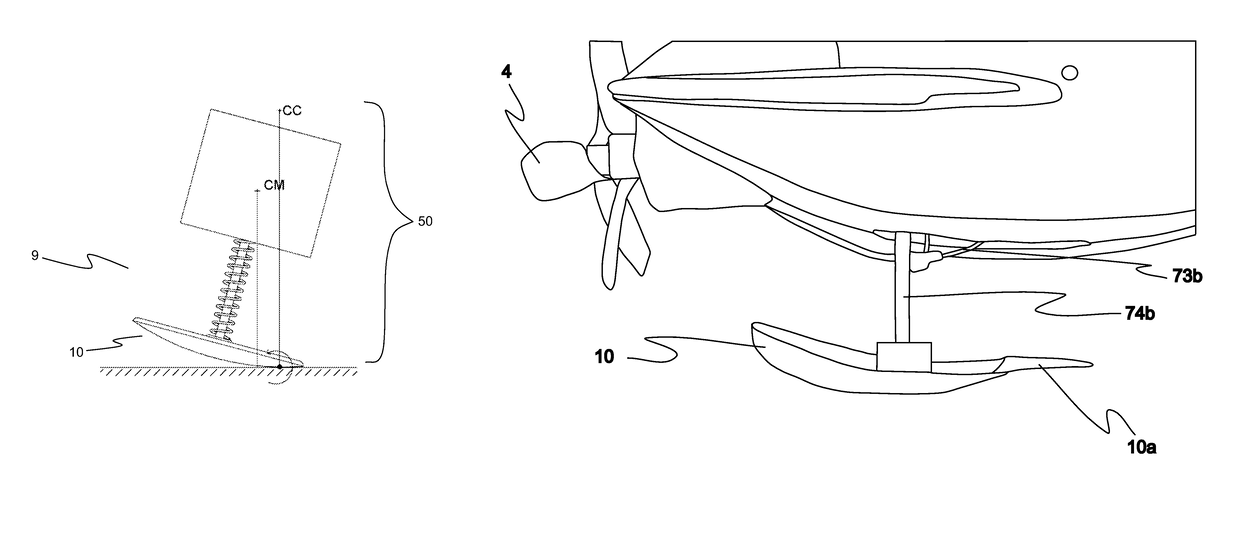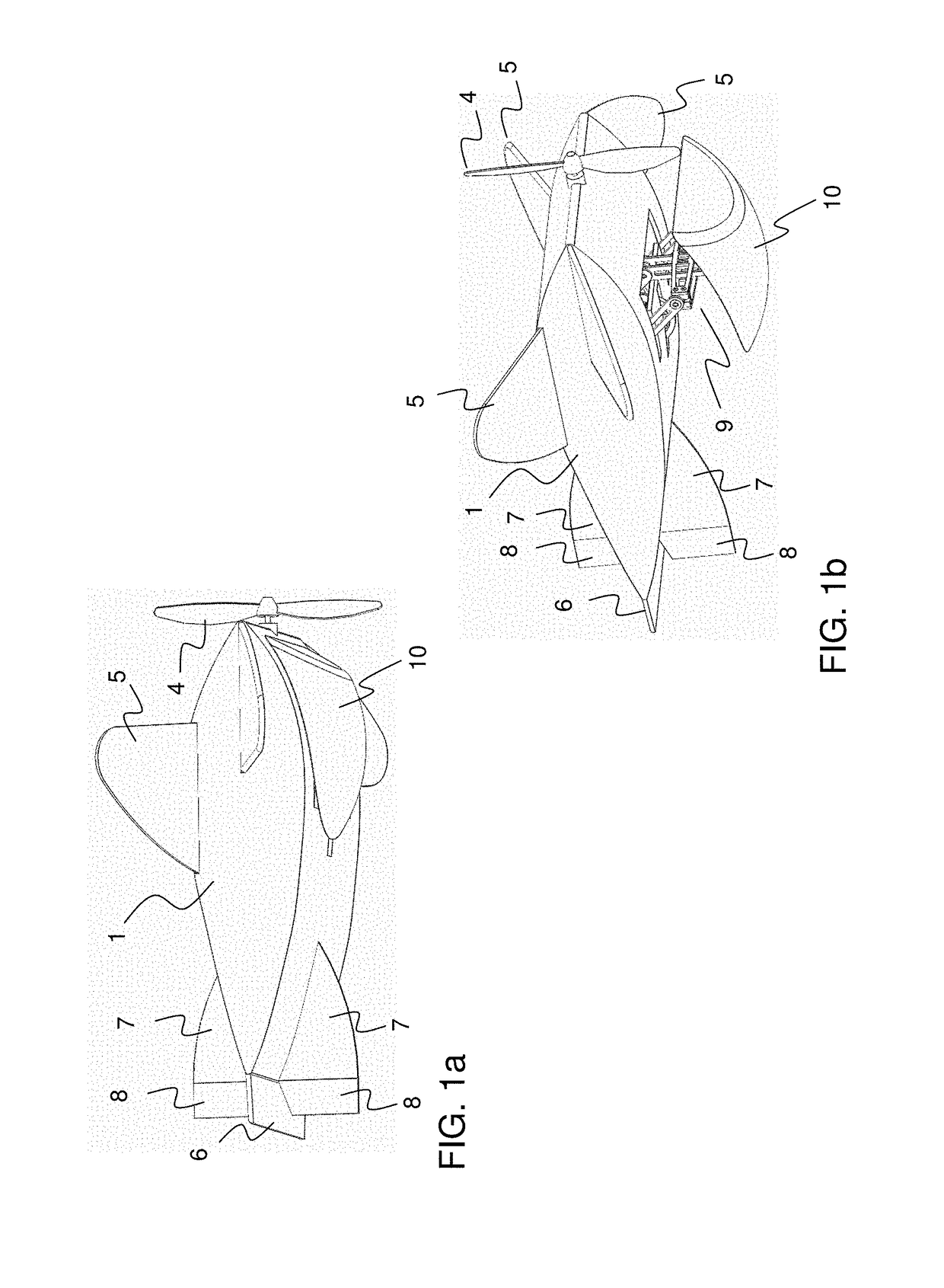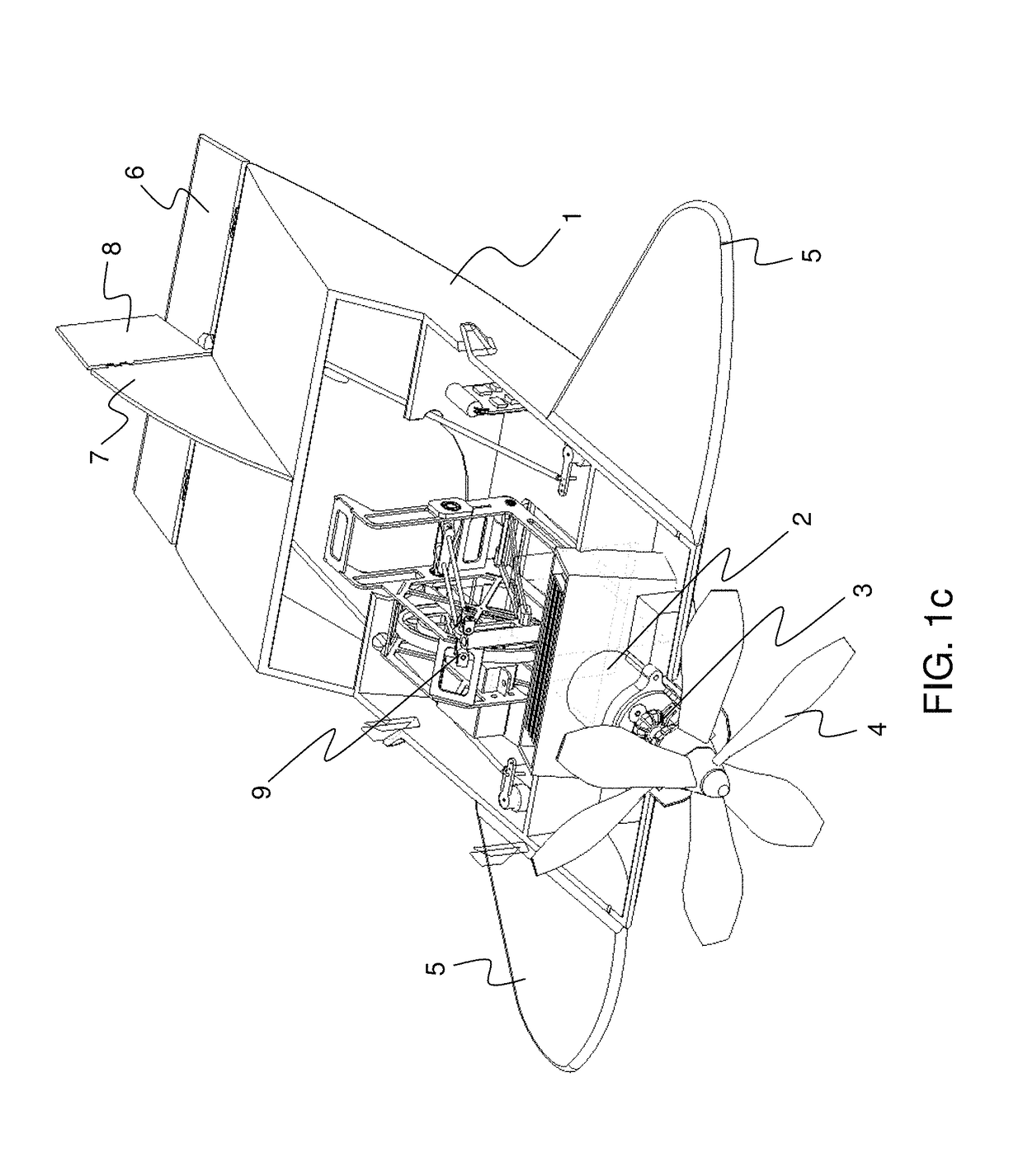Multi-mode mobility micro air vehicle
a micro-air vehicle, multi-mode technology, applied in the direction of vertical landing/take-off aircraft, transportation and packaging, launch/towing gear, etc., can solve the problems of all existing systems having their disadvantages, unable to perform tasks, and existing miniature uavs or mavs generally limited to a single mode of mobility
- Summary
- Abstract
- Description
- Claims
- Application Information
AI Technical Summary
Benefits of technology
Problems solved by technology
Method used
Image
Examples
Embodiment Construction
[0066]A flying sensor platform (FSP) is any unmanned flying vehicle having a payload of one or more sensors for detecting conditions or stimuli which are important not merely for the operation of the vehicle. The sensors may be, for example, video and / or audio sensors (cameras and / or microphones, or electro-optical infrared camera combinations), sensors for detecting weather conditions (temperature, barometric pressure, wind speed, darkness or cloudiness), sensors for detecting movement (gyroscopes, accelerometers, infrared sensors, laser sensors, radar sensors, sonar sensors, seismometers), sensors for detecting position or range (GPS, laser range finders), sensors for mapping (synthetic-aperture radar), sensors for detecting attitude, altitude, airspeed, or other flight parameters, or sensors for signals intelligence (SIGINT). Recordings from the sensors may be written to a memory (such as a flash memory or hard disk), or may be transmitted via wireless transmission (such as radio...
PUM
 Login to View More
Login to View More Abstract
Description
Claims
Application Information
 Login to View More
Login to View More - R&D
- Intellectual Property
- Life Sciences
- Materials
- Tech Scout
- Unparalleled Data Quality
- Higher Quality Content
- 60% Fewer Hallucinations
Browse by: Latest US Patents, China's latest patents, Technical Efficacy Thesaurus, Application Domain, Technology Topic, Popular Technical Reports.
© 2025 PatSnap. All rights reserved.Legal|Privacy policy|Modern Slavery Act Transparency Statement|Sitemap|About US| Contact US: help@patsnap.com



